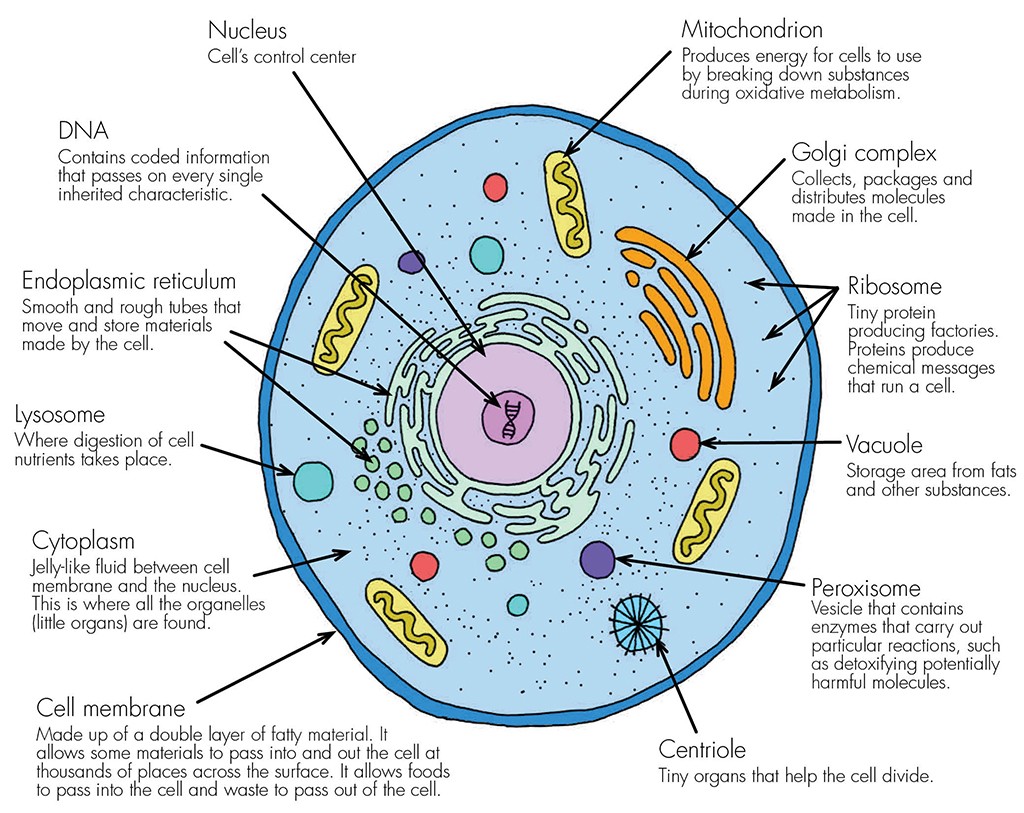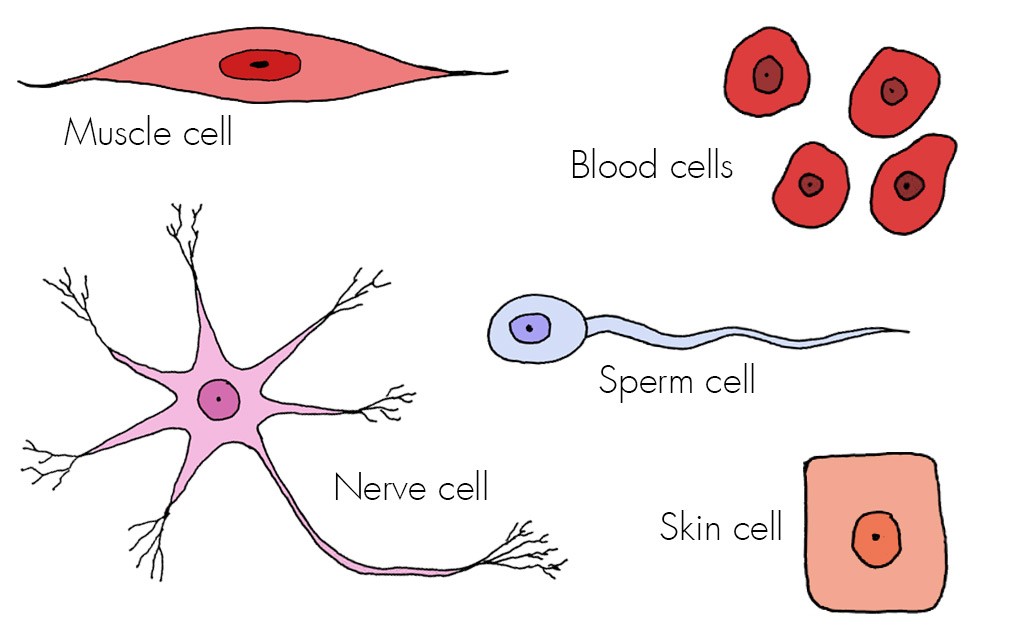Cell are amazing things. They are the smallest forms of life and are quite literally the building blocks of life. When scientists look for life on other planets, they look for single cell organisms. They look for one tiny living cell. Finding one means life on other planets. Biologically, we are nothing more than collections of living cells and what happens to our cells happens to us.
A basic, living animal cell with it’s organselles (mini organs) all working together to keep it functioning at it’s peak.
There are millions of different types of cells with different structures, sizes, and jobs to do in the body. Red blood cells carry oxygen in the body, white blood cells destroy invading organisms, and nerve cells send messages throughout the body by sending electric and chemical impulses.
When some cells multiply they form tissue (like muscles). When different types of tissue come together, they become an organ (the heart for example). When a number of organs come together, they are called a system (the digestive system).
Cells in the human body generally have the same basic structure. In the center of the cell is the nucleus, which is the control center, and this is where the cell’s DNA is kept. DNA is a chain of connected genes which contain the instructions for building and maintaining our bodies. Genes control how each cell functions, including how quickly it grows, how often it divides, and how long it lives. Almost every cell in a person’s body has exactly the same DNA in its nucleus and it is critical that, when that cell divides, the two new cells have an exact copy of the DNA that was in the old cell. If a cell divides with altered DNA, that’s the beginning of cell mutation, and that’s not a good thing.
Cells, and DNA are very sensitive to their environment. DNA, even though it is the same in every cell, can be expressed in a number of different ways depending on the proteins in the cell. A stem cell is a cell that has the potential to become any type of cell. The environment the stem cell’s DNA is exposed to determines whether it becomes anything from a muscle cell to a bone cell, or even a fat cell. Even though the cells started out the same, their environment changed the way the DNA expressed itself.
Studies show that cells exposed to a healthy environment stay healthy, and those exposed to a toxic environment become sick. Then, when the sick cells are exposed to a clean and nutritious environment they become healthy again. Our blood is the environment in which our cells live. Our blood feeds our cells, it bathes them. The toxins in our bloodstream have a direct effect on the wellbeing of our cells. Toxins can enter our blood from outside environments or through our modern lifestyles, or even as a result of our thoughts and emotions through chemicals and hormones being released from the brain.
Each cell is its own special and wonderful, living thing and you are made up of trillions of them. We need to respect and look after each and every one of them.
x

